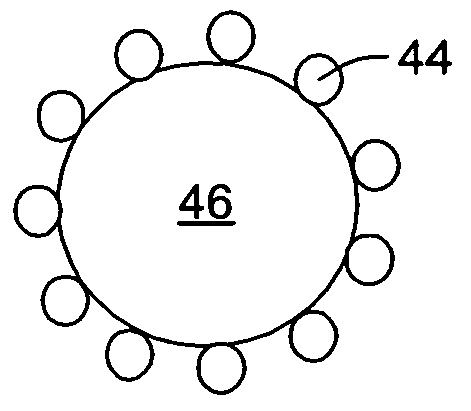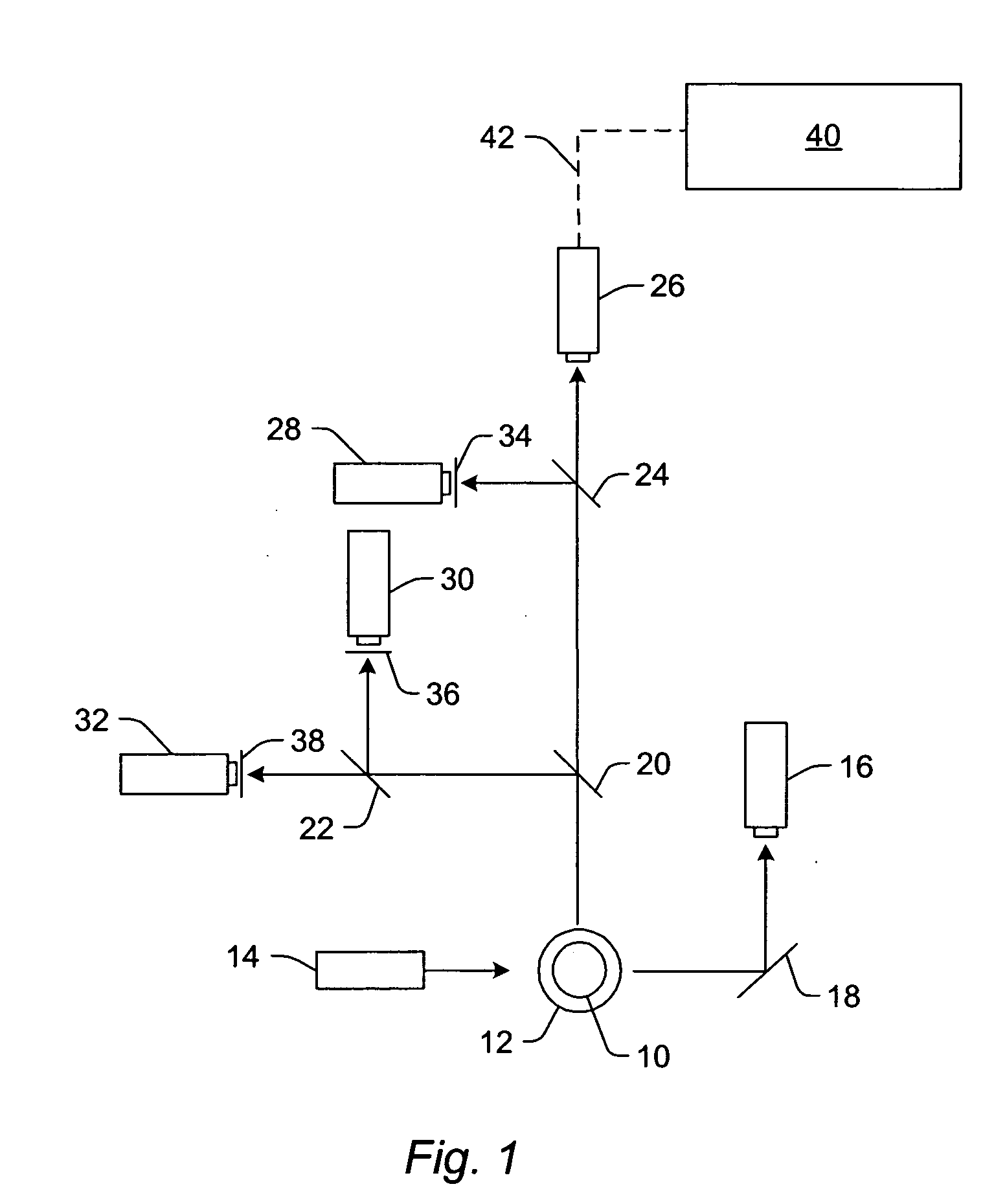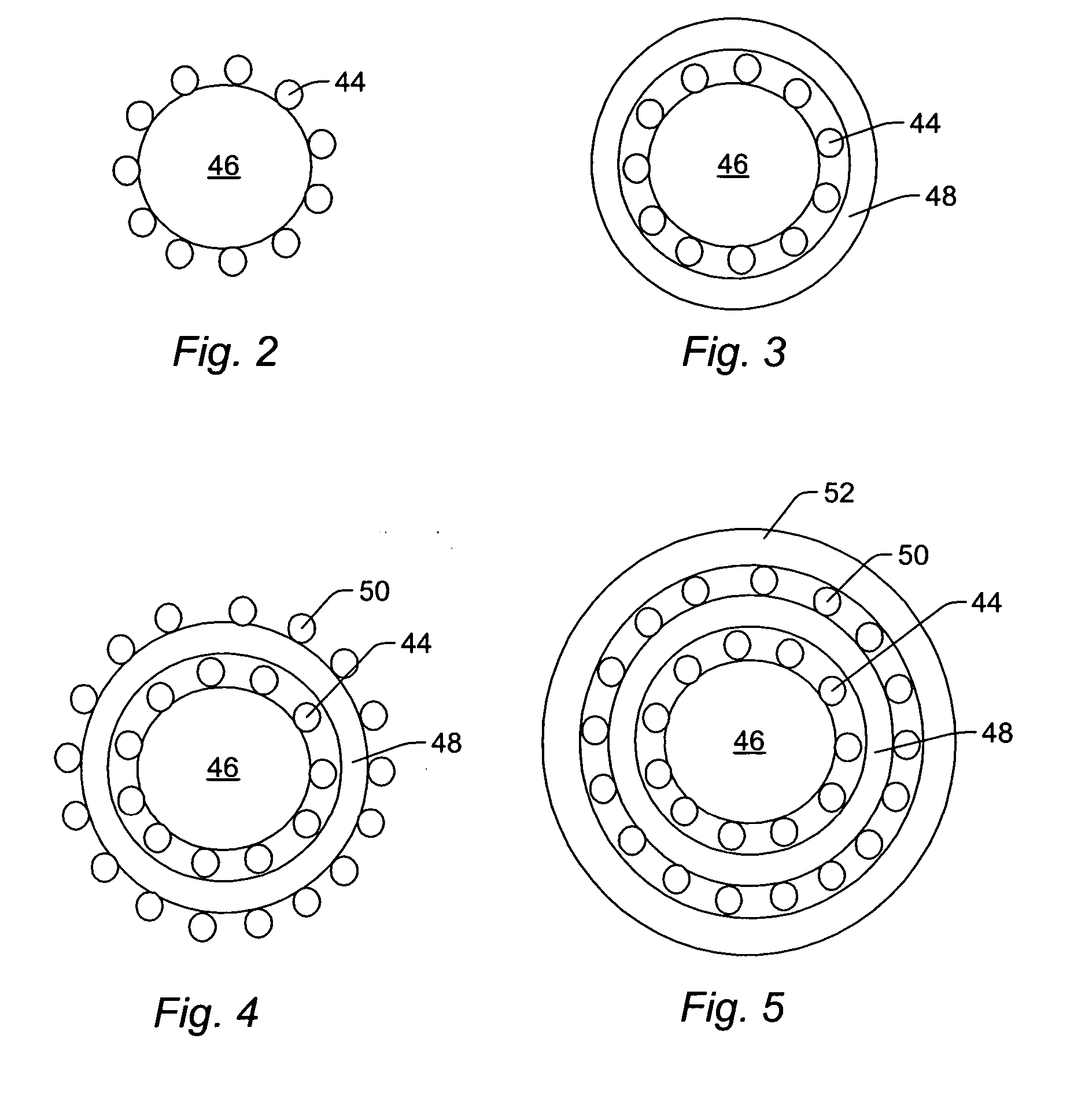Magnetic microspheres for use in fluorescence-based applications
- Summary
- Abstract
- Description
- Claims
- Application Information
AI Technical Summary
Benefits of technology
Problems solved by technology
Method used
Image
Examples
example 1
Preparation of Magnetite
[0088] 0.2 moles of Iron (III) chloride hexahydrate and 0.1 mole of iron (II) chloride tetrahydrate were dissolved in 400 ml of deionized water in a three-neck round bottom flask with overhead stirring. This mixture was heated to 90° C. with continued stirring. 520 ml of 6N NaOH was added dropwise over 1 hour. The reaction was allowed to continue for 24 hours.
example 2
[0089] 10.2 g of commercially available polystyrene core microspheres with a functionalized carboxylated surface modification were suspended in a total volume of 100 ml methanol. 12.4 ml of the prepared magnetite solution was washed with deionized water, followed by two washes in 1M HCL, and finally two washes with methanol. Each wash step was followed by centrifugation at approximately 4000×g to separate the larger magnetite particles from the smaller magnetic particles. The magnetite was resuspended in a total volume of 100 ml of methanol. The magnetite and the core microspheres were combined and allowed to mix for 3 hours. This mixture was then washed four times with deionized water, and then resuspended in a total volume of 375 ml of water and charged to a 500 ml three-neck round bottom flask.
[0090] A mixture of 12.6 g distilled styrene, 0.768 g distilled divinylbenzene, 0.173 g benzoyl peroxide, and 1.47 g acrylic acid was prepared and charged to ...
PUM
| Property | Measurement | Unit |
|---|---|---|
| Fraction | aaaaa | aaaaa |
| Size | aaaaa | aaaaa |
| Size | aaaaa | aaaaa |
Abstract
Description
Claims
Application Information
 Login to View More
Login to View More - R&D
- Intellectual Property
- Life Sciences
- Materials
- Tech Scout
- Unparalleled Data Quality
- Higher Quality Content
- 60% Fewer Hallucinations
Browse by: Latest US Patents, China's latest patents, Technical Efficacy Thesaurus, Application Domain, Technology Topic, Popular Technical Reports.
© 2025 PatSnap. All rights reserved.Legal|Privacy policy|Modern Slavery Act Transparency Statement|Sitemap|About US| Contact US: help@patsnap.com



